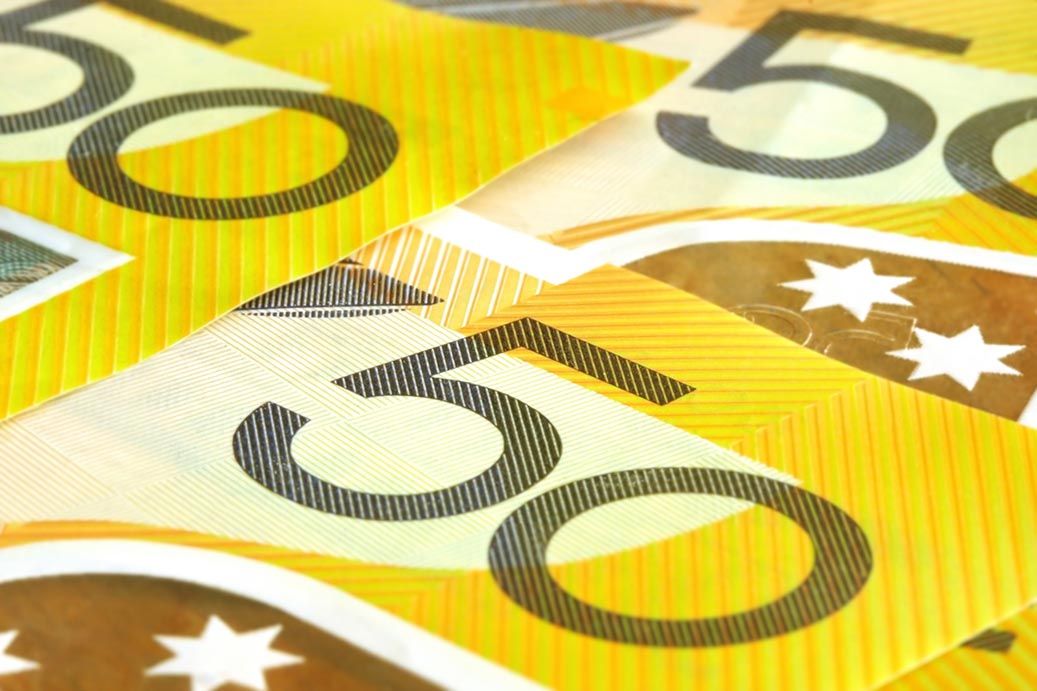Australian Dollar Upside is Limited from Here says Commonwealth Bank of Australia
- Written by: James Skinner
-

Image © Robyn Mac, Adobe Stock
- AUD forecasts downgraded at Commonwealth Bank of Australia.
- USD seen steady as "we can't see what it will weaken against".
- GBP forecasts unchanged as long road to Brexit stability weighs.
The Australian Dollar is still likely to rise this year, according to the latest forecasts from Commonwealth Bank of Australia, although a litany of domestic and international headwinds mean the upside is only limited.
Australia's Dollar has risen by 0.69% against the U.S. Dollar this year and is up against a total of seven G10 currencies, with the only rivals to achieve a better performance being the New Zealand and Canadian Dollars.
However, these gains are greatly reduced from those that prevailed at the end of January, when the Aussie had been boosted by the Federal Reserve abandoning its merciless push to lift U.S. interest rates and hopes that an end to the U.S.-China trade war could be near.
But most of January's gains have since come undone thanks to an about-turn by the Reserve Bank of Australia (RBA) on its own interest rate guidance, a creaking housing market, faltering Chinese economy and resilient U.S. greenback.
Now, Commonwealth has downgraded many of its forecasts for the Antipodean unit in anticipation of an uninspiring few quarters ahead, although the bank says the Aussie should still manage to eke out a small gain for the year.
"Our AUD forecasts have been lowered slightly because the risk to Australia's economy have now become more evenly balanced. Previously there were upside risks," says Richard Grace, head of currency strategy at CBA.
Above: CBA Australian Dollar cross-rate forecasts.
The Reserve Bank of Australia slashed its GDP growth and inflation forecasts last week before warning markets that the next move in interest rates could be either up or down, when previously it had said the next move in the cash rate would most likely be up.
It now forecasts the Aussie economy to grow by just 2.75% in 2019, down from the 3.25% projection issued at the end of last year. And core inflation is set to rise only to 2% this year, rather than the 2.25% the RBA previously envisaged.
Slower global growth and weaker household spending are the main factors behind the forecast downgrades, although some say the RBA is still being too optimisitic in its outlook for the domestic economy because falling house prices could have a larger than anticipated impact on spending.
As a result the bank claims the risks of an interest rate cut are "finely balanced" with those of hike. But financial markets opted not to wait around to find out what happens next and have instead bet heavily the RBA will cut rates before the year is out.
"In the short-term the slowing global economy, and the risk of slower growth in Australian household consumption as Australia's housing adjustment continues, will limit AUD uspide," says Grace.
Below is a selection of tables and quotes detailing what the current environment will mean for individual Australian Dollar exchange rates, as well as those of other currencies.
The AUD/USD rate was quoted 0.16% higher at 0.7101 Thursday and is up 0.7% for 2019, while the Pound-to-Australian-Dollar rate was -0.60% lower at 1.8047 and has fallen by -0.44% this year.
Above: CBA forecasts of major exchange rates.

Pound Sterling
"The U.K. economy has slowed because of structural and cyclical reasons associated with Brexit, and the global economic slowdown. There remains a tremendous amount of uncertainty associated with the final terms of the Brexit outcome, and hence the immediate direction of GBP."
"It is clear the U.K. economy has been negatively affected by the political uncertainty and it will take some time before GBP can fully recover to its pre‑Brexit level. We currently don’t have GBP reaching its pre‑Brexit level in the forecast profile."a

U.S. Dollar
"Despite the Fed halting interest rate rises, and the rates market partially‑pricing in potential future Fed rate cuts, we don’t believe the USD will weaken much in H1 2019. That is because we can’t see what the USD will weaken against. Neither the Eurozone, U.K., Chinese or Japanese economies are obvious recipients of currency strength at this point in the economic cycle."f

Euro
"Europe’s economy has softened notably, with a negative quarter of growth recorded in Germany during Q3, and a technical recession currently underway in Italy. Furthermore, the Eurozone leading indicators are not yet suggesting a pick‑up in Eurozone economic activity. We have delayed our forecast of when ECB raises interest rates from Q4 2019 to Q4 2020 and delayed the timing of when EUR appreciates."f

New Zealand Dollar
"Our NZD forecasts have been lifted slightly to reflect the well‑performing New Zealand economy, the upgrade to New Zealand’s sovereign outlook by selected international credit rating agencies, the persistently high New Zealand terms of trade, and the continued investor interest in New Zealand assets." f

Canadian Dollar
"Our CAD forecasts have been lifted slightly to reflect the strength of the Canadian economy, and because we still anticipate the Bank of Canada will lift interest rates despite the Fed halting raising interest rates. We now see the Bank of Canada lifting interest rates by 25bpts in Q4 2019 and by another 25bpts in Q2 2020."
Time to move your money? Get 3-5% more currency than your bank would offer by using the services of foreign exchange specialists at RationalFX. A specialist broker can deliver you an exchange rate closer to the real market rate, thereby saving you substantial quantities of currency. Find out more here.
* Advertisement






